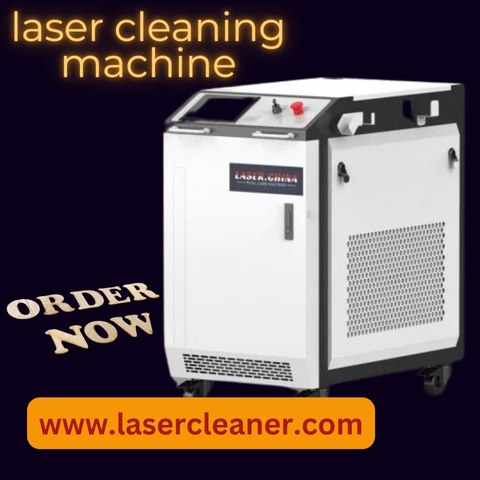The rapid evolution of technology continues to reshape industrial processes worldwide, and cleaning is no exception. Among the innovations that have emerged, the laser cleaning machine stands out as a revolutionary solution promising precision, efficiency, and environmental friendliness. But can this high-tech device truly replace the traditional cleaning methods that have been used for decades in factories, workshops, and maintenance operations? To answer this, we need to explore how laser cleaning machines operate, their practical applications, and what makes them a game-changer in the industrial cleaning world.
Understanding Laser Cleaning Machines
At its core, a laser cleaning machine uses a focused beam of light to remove contaminants, rust, coatings, or residues from surfaces without damaging the underlying material. This process leverages the principle of laser ablation—where the laser energy interacts with the dirt layer, vaporizing or breaking it apart, effectively “blasting” the impurities away. Unlike traditional cleaning methods such as sandblasting, chemical solvents, or mechanical scraping, laser cleaning is contactless and highly precise.
Industrial Applications That Highlight Its Potential
Laser cleaning machines have gained traction across multiple industries, signaling their potential to redefine cleaning protocols. For example, in automotive manufacturing, the laser system is used to remove rust or old paint layers before repainting or welding. In aerospace, it cleans sensitive turbine blades or components without causing micro-abrasions, maintaining structural integrity. The electronics industry benefits from laser cleaning in preparing circuit boards or removing residues on delicate components where traditional abrasive methods could cause damage.
This broad range of applications illustrates why many companies consider laser cleaning a valuable upgrade to their cleaning arsenal.
The Science Behind Laser Cleaning: Why It Works
The key to the laser cleaning machine’s effectiveness lies in the laser’s wavelength, pulse duration, and power, which can be finely tuned to target only the unwanted material. The laser pulses rapidly heat and expand the contaminant layer, causing it to detach and disperse. Because the laser operates with extremely high precision, it can clean intricate surfaces and hard-to-reach areas that conventional methods often struggle with.
Moreover, the non-contact nature of laser cleaning means there is no mechanical wear and tear on the surface being cleaned. This is a critical factor for industries dealing with delicate materials or components with tight tolerances.
Environmental and Safety Considerations
While the question here is whether a laser cleaning machine can replace traditional methods, it is worth noting how this technology aligns with growing environmental regulations and workplace safety standards. Traditional methods often rely on harsh chemicals or generate hazardous dust and debris, requiring extensive protective measures and disposal processes. In contrast, laser cleaning produces minimal waste, mostly in the form of fine particles that can be easily captured and managed.
This shift toward cleaner and safer industrial practices is driving many companies to invest in laser cleaning technology, not only for the quality of cleaning but also for compliance and worker health.
Economic and Operational Impact
One of the major concerns when adopting new technology is cost. Laser cleaning machines require a higher initial investment than some conventional methods. However, the operational efficiencies gained often balance or outweigh this expense over time.
Laser cleaning reduces downtime because it can clean surfaces quickly and often eliminates the need for disassembly or transport of parts to external cleaning facilities. Maintenance cycles become more streamlined, and fewer consumables such as solvents, abrasives, or protective gear are needed. Companies that rely on precision cleaning find that laser cleaning reduces rework and defects, which translates directly into cost savings.
Furthermore, the adaptability of laser cleaning machines allows them to be integrated into automated production lines, further enhancing productivity. This flexibility is a significant advantage in industries where production speed and consistency are paramount.
Challenges and Limitations in Replacing Traditional Methods
Despite its many strengths, the laser cleaning machine is not a universal solution for all cleaning needs. For example, extremely thick coatings or large-scale surface cleaning might still be more efficiently handled by mechanical or chemical methods in some cases. Also, the skill and training required to operate and maintain laser cleaning equipment can be a barrier for some organizations.
Yet, the trend is clear: the laser cleaning machine is becoming a cornerstone of modern industrial maintenance and preparation processes, complementing or, in many cases, replacing traditional methods.
Final Thoughts
The question of whether a laser cleaning machine can fully replace traditional cleaning methods is nuanced. In many industrial settings, laser cleaning machines have already proven their superiority in precision, safety, and operational efficiency. They offer a sophisticated approach that meets the increasingly stringent demands of modern manufacturing and maintenance environments.
By leveraging advanced laser technology, industries benefit from faster turnaround times, reduced environmental impact, and higher quality outcomes that traditional cleaning methods struggle to match. While it may not entirely replace every conventional cleaning process immediately, the laser cleaning machine is undeniably paving the way toward a new standard in industrial surface preparation and maintenance.
For businesses aiming to stay competitive and compliant with future regulations, investing in laser cleaning technology is more than a trend — it’s a strategic move toward smarter, cleaner, and more efficient industrial operations.

















